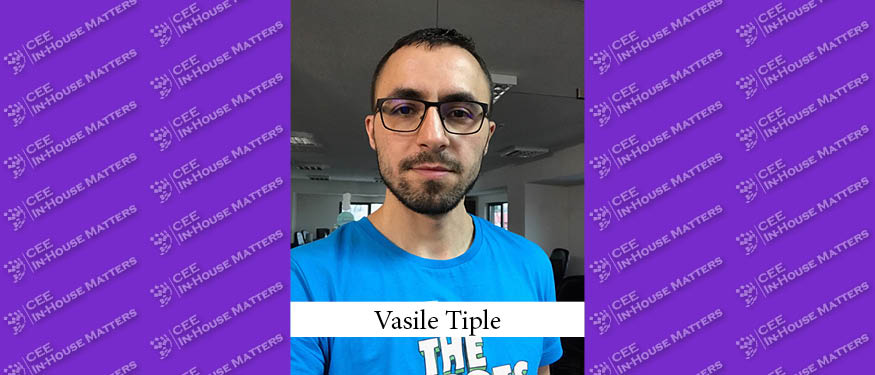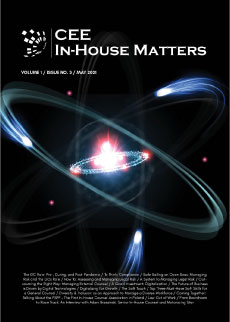In July, CEE Legal Matters reported that Vasile Tiple, the first in-house counsel and former General Counsel of UiPath, had left that role to become the company’s Head of Legal Automation. Tiple reports on the recent launch of the sArb - Simplified Arbitration Reference Facility software robot that was developed by UiPath for the Bucharest International Arbitration Court.
CEEIHM: UiPath recently announced the launch of the world’s first fully automated institutional mediation process for the conclusion of arbitration agreements. Tell us a few words about what this solution means in practice and how it works.
Vasile: The robot – called “sArb” – facilitates a rules-based, predictable, and fully transparent agreement process. The process is simple: after the proposer lodges a unilateral, conditional offer for the conclusion of an arbitration agreement via an end-to-end automated process, the software robot extracts the relevant data of the parties involved and generates the Arbitration Agreement. Next, it gathers the parties’ consent via DocuSign (or another e-signature tool), in a fully electronic, secure, and reliable manner. At the same time, it provides key info on the Bucharest International Arbitration Court and the sArb process to the counterparty by automatically sending out an e-mail. Should the counterparty agree to the proposal and sign within the stated timeline, the robot informs all parties via e-mail that the agreement has been reached and the process is marked as complete. If no response is obtained within the specified deadline, no agreement ensues, and the process is voided. The introduction of the fully automated institutionalized mediation process will help businesses everywhere benefit from the elimination of the unnecessary frictions that can arise from the direct negotiation of amendments to ongoing contracts or that of a new agreement altogether.
CEEIHM: Why did you pick the BIAC to partner up for this project?
Vasile: Because they had the idea and the courage to follow up on the Legal Automation initiative which we started at the beginning of 2019. They saw our case-studies and ideas about how Robotic Process Automation can bring about innovation in the legal world and reached out to us with this proposal. Our legal automation initiative was designed to promote our own legal robots implemented as part of UiPath’s legal department’s work but also to create the right venue for legal automation discussions to occur with legal professionals from all legal industries and branches. We want to understand the struggle they have and see if we could bring our own expertise to solve their issues, with automation. This is one of the best examples of an area which typically you wouldn’t think is prone to automation, but thanks to BIAC and Adrian Iordache – a member of BIAC’s Administrative Council and Project Leader – we proved the contrary. We hope that this successful example will help us maintain this discussion with the legal industry.
CEEIHM: What was the driving force for this new software robot? As the first GC implementing legal robots in your team’s work, what was the value proposition you saw?
Vasile: I would say that the driving force was the promise it holds. If we can help and support creative legal professionals, irrespective of their function (contracting, sales, IP, litigation, arbitration, litigation, etc.), in automating repetitive matters and add more efficiency and security to a process, while, at the same time, showcasing to other legal professionals the benefits of automation, then we should totally be a part of this innovation effort and encourage it as much as we can.
I will use this opportunity to ask anyone who has an idea of how to improve his or her own processes to contact me and see if we can help. The value I saw in this proposition was similar to what I was thinking when we were looking at designing and using our first legal robot. As I look back at our own history, we were, from the beginning, an unusual legal department in an unusual company that was on the brink of unprecedented success, and we only needed the right legal framework and infrastructure to reach it.
Somehow I saw BIAC and Adrian’s efforts to improve arbitration processes similar to my own efforts three and a half years ago to identify the right mechanisms to enable and support the success of the company by creating an agile legal team with digital-based and standardized processes assisted in its work by legal robots and latest technologies (e-signatures, smart forms, project management tools, etc.). Therefore, the value is reflected by the creativity of a legal professional who is not afraid to constantly look for ways to work more efficiently, more quickly, and more accurately, which is what we also have in this case.
CEEIHM: The press release announcing sArb stated that the hope is that it will facilitate the adoption of arbitration by parties involved in ongoing agreements to solve potential disputes in the future. Why do you believe this is the case?
Vasile: Well, I think that any legal-related process which is automated can make a difference and improve the lives of both legal professionals and their customers. Arbitration is already a fast and secure way of settling disputes and this initiative to adopt the latest technologies in making the process of settling disputes even more smooth, fast, and simple is another action to ensure that objective.
The future in all industries lies with how well stakeholders can adjust their processes in relation to their customers to achieve simplicity, speed, and convenience, which is the key to success. Arbitration and litigation are no exceptions to this rule, and at least with one case in arbitration, we have made this possible.
CEEIHM: What’s the next phase in this project now that it’s out into the wild? How will you monitor and assess its success?
Vasile: We hope that it will be successful not only for the BIAC but it will also be an example for others in the industry of how vision and creativity can improve traditional processes that were thought non-automatable or outside technology’s reach. New processes implemented by the BIAC and other similar institutions will also be a key metric in assessing the success of this pilot.
CEEIHM: How does this project fit in your company’s wider strategy? What can we expect next?
Vasile: As I said previously, our initial legal automation strategy, which we are taking to the next level now with the creation of a new Legal Automation team, was always to generate a venue for discussion about how we can automate legal. To this end, we promoted and made public our own case-studies, developed pro bono legal automation solutions, published a legal automation whitepaper, engaged in research, offered demos, and sponsored various legal tech events (such as the Global Legal Hackathon in New York and Bucharest) including by presenting our strategy at some of CEE Legal Matters’ events for the region.
I can say that at a high level we now have developed our expertise in automating legal processes in corporations, public authorities, and – with this case – also with third party independent dispute resolution institutions. I would say that next item on our list is to expand these successful case-studies to all our customers and partners, identify new product-related features that can open more opportunities focused on the legal industry, and also to identify partners to automate judicial system-related processes where the amount of data processed in a manual manner or under an unstructured digital strategy is overwhelming.


